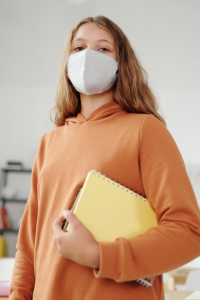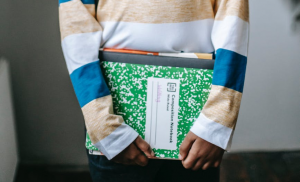Are you ready for your school district’s transition to in-person learning?
 This month, we’re kicking off a series of blog posts on Trending Topics….no, not the Kardashians, but real, true trending topics–and challenges-that education leaders and school communicators are facing right now.
This month, we’re kicking off a series of blog posts on Trending Topics….no, not the Kardashians, but real, true trending topics–and challenges-that education leaders and school communicators are facing right now.
Currently, as schools across the nation are returning students to in-person learning after a year of distance learning, this week’s topic focuses on the Top 10 Questions that parents are asking as their child returns to in-person learning.
Return to In-Person Learning
As districts are looking to transition to in-person learning, there are many considerations and steps that need to be implemented in order to ensure a smooth transition. Navigating the return to in-person learning is a transition that is new territory for many. Managing communication during the COVID-19 pandemic has been one that has felt like a constant crisis without any playbook, and cannot rely on traditional communications plans. So in this unprecedented season, it is essential to stay proactive in clear and effective communications. Are you ready to handle questions about returning to in-person learning?
After working with several school districts that have been transitioning to in-person learning, there are some key questions that should be answered as early as possible to prevent rumors and misinformation, and to reinforce stakeholder trust.
Navigating a New Landscape
As school leaders are finding, there is not one correct way to transition to in-person learning. Depending on the grade levels of students being served, classroom sizes, the number of students returning to in-person learning, employee negotiations, state and local health department requirements and more, the planning in-person learning planning process that school leaders are undertaking are detailed and time consuming. But, remember that this is also a new experience for both students and parents, and they have questions about the process and what to expect. Questions and details left unanswered about transitioning to in-person learning can lead to misunderstanding, rumors, and the spread of false information. Being aware of individuals’ concerns while navigating this new landscape is essential in building and retaining trust throughout this process.
Proactive Communication
A way to overcome miscommunication is to be proactive and answer common questions ahead of time. Many parents and students have valid concerns about the process and return to in-person learning. Although it is challenging to manage so many details, proactive communication can help demonstrate student safety and maintain parent trust. Implementing a Frequently Asked Questions page on the district’s and schools’ websites, along with the in-person learning plan will help to funnel many of these questions and reinforce trust and your relationships with families. Share the FAQs via email and social media to ensure that your families see the information.
 Top 10 Questions Parents have about In-Person Learning
Top 10 Questions Parents have about In-Person Learning
- What is the schedule? Being clear about the details of the schedule–what days cohorts are attending and during which hours–is an important first question to provide for parents and students. This can be explaining how the schedule will change and similarities to the current structure. A schedule with easy-to-view data will be immensely helpful in funneling initial questions to help accommodate parents. Keep in mind that families need to plan for childcare and adjust their own schedules when these transitions occur.
- How will I be informed about COVID-19 cases in the classroom, on the school campus? Providing specific procedures will help give order and peace of mind to parents so they know exactly what to expect in case of a COVID-19 case on campus. Being clear about covid cases will help show intentionality and transparency.
- What if the teacher or someone in my child’s class is COVID-19 positive? This is an important question for both parents and students to know what to expect. Having clear procedures and expectations and steps to follow will help give clarity to parents.
- Where do I drop off/pick up my student from school? Providing maps and visuals will give a reference to parents. In-person learning will be different from attendance before the pandemic. Communicating specifically the procedures ahead of time for dropping off students will help ensure proper social distancing and safety to help maintain order on the day of returning.
- How will snacks, recess, lunchtime be handled? The daily routine of in-person learning is different from when the pandemic began. What are ways that these daily activities are carried out realistically and safely? This will be an important question to answer not just for parents but students as well since many are curious to see how their interactions with one another will change or feel the same.
- What will be done to promote physical distancing? Since physical distancing can have many applications it is important to define the steps to ensure clear procedures. Having clear expectations and procedures for social distancing will help give peace of mind to parents to see a safe learning environment.
- What are the disinfecting procedures? Demonstrating thoughtful and clear procedures for disinfecting will help to model the promotion of a safe learning environment. What are regular disinfecting practices throughout the day and what are deeper janitorial practices that will be implemented?
- What measures will be implemented on campus to ensure the safety of staff and students? Beyond physical distancing and regular disinfecting what safety measures can students and staff expect? What types of screening procedures will be required of students and staff? Are there similarities and differences between the procedures between staff and students? Include visuals and graphics to help make steps memorable and clear.
- What happens if a student comes to school ill? Addressing possible scenarios helps give clarity to parents, staff, and students on the proper actions and steps to take in case of an illness. This will help to demonstrate further the safeguards in place to promote a safe learning environment in multiple situations.
- Will my child be assigned to a different teacher? This is an important question to answer for both parents and students. Knowing what to expect ahead of time will help in the transition and allow students to best connect with their teacher.
The Bottom Line: Communication Matters
Implementing questions and answers about in-person learning is helpful in not only maintaining organization but builds parent trust. Proactive communication helps minimize the spread of confusion and helps to funnel common questions.
We Are Here to Help
If you’re balancing school/district leadership with communication responsibilities, and you’re finding yourself falling behind on timely and consistent communications across your communication channels, Sounding Board Marketing & Communications can help. You can discover services to help school districts navigate communicating well in an unfamiliar landscape. To learn more about communication services that best fit the needs of your district you can explore Sounding Board Marketing & Communications Strategic Services. Schedule a 30-min consultation today and discover proactive communication to help fuel a positive and impactful transition to in-person learning.
